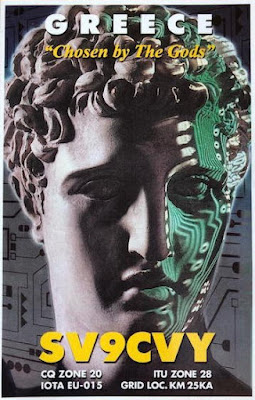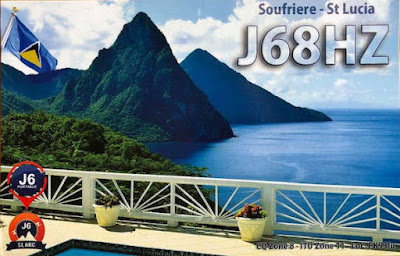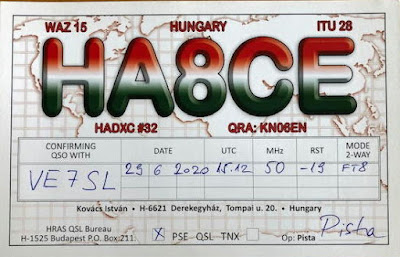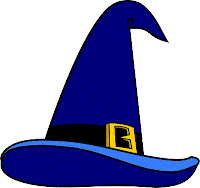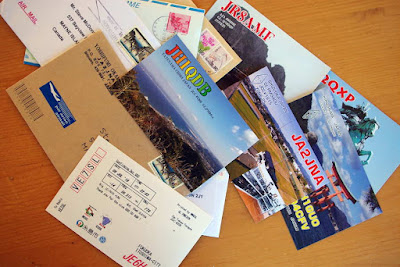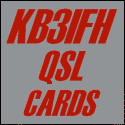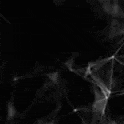Posts Tagged ‘6m’
 Some 6m Summer Excitement
Some 6m Summer Excitement

With three seasons of FT8 under its belt, there’s no doubt that it's taken over as the number-one mode for the 6m band ... there are very few traces of CW or SSB to be found.
What it hasn’t taken away, is the magic!
For the most part, this summer’s conditions from the west coast were pretty normal, except for when they weren’t ... and when they weren’t, they were pretty spectacular!
The spectacular parts were highlighted by one particularly unique contact that can only be attributed to some heads-up operating skills, a little help from FT8 ... and the unpredictability of Sporadic-E.
On June 20, at 0056Z, K7CW (Paul), south-west of Seattle, nudged his signal all the way to Hong Kong, more specifically, to VR2ZXP’s crowded apartment building. But that’s not the incredible part. That happened when Paul heard and exchanged signal reports with Alfred’s tiny station!
 |
| Paul, K7CW |
 |
| Not the best location for weak signal 50MHz DX! |
"As I told to Paul, it’s a hard job to be a ham in VR2 Hong Kong especially for the DX. Hong Kong is a high density population city. 99% people are living in apartment only. The housing price here is crazy around US$1800 per sq. feet. Neighborhoods always complain why we setup antennas out of our windows and produce radiation to affect their health. So, what we just can do is to use a small whip with QRO for the QSO. Besides, interference is also serious. Thousands of air conditioner is surrounding me and a power station 132kV to 11kV is just faced to me in 1km away. Here the noise level on low HF band at night is S9."
As indicated above, Alfred’s station is located in a typical high-rise apartment, surrounded by numerous others, with no room for antennas. His solution is to clip a short (60”) whip antenna, horizontally mounted on his balcony railing, similar to this one from 20 years ago ... before being surrounded by noisy high-rise apartment buildings!
I’m not sure which is the most spectacular part of this contact ... that Alfred could detect Paul’s signal in such a noisy environment using such a small makeshift antenna or that Paul was able to copy the tiny signal coming from uptown Hong Kong.
 |
 |
| K7CW's 9el - 50' Yagi at 80' |
"Anyway, our QSO with Paul is really special. However, I am just a small potato on this story. Without below reason, our QSO may not be success.
1) Paul’s big gun antenna and his station perfect setup.
2) The JT operation mode which introduced by K1JT Mr. Joseph Hooton Taylor. Let me have a chance to say thank you to Joseph."
However, the summertime fun did not stop here. Early on the morning of May 31st, westerners were treated to what some 6m diehards called the best European opening they've ever experienced!
Up on Vancouver Island, John, VE7DAY, was surely glad that he checked the band early, as what followed was a European opening that bounced from one country to another for over 3-1/2 hours! By the time it was over, John had bagged 66 contacts on FT8 and 19 new DXCC entities, including the difficult to work 9H1 in Malta! John's list looks more like 20m CW rather than 50MHz in mid-summer: GM, PA, G, I, DK, 4O, 9H, OM, HG, LA, HB, OE, SM, 9A, MW, YT, OK, LZ, SV!Long openings like this occur very rarely, making them even more thrilling and can cause even the most experienced 6m DXer’s mouse-hand to tremble with excitement!
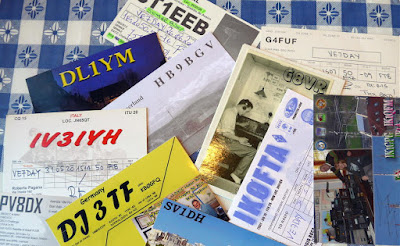 |
| Some of VE7DAY's wallpaper from the May 31st opening. |
Others up and down the west coast also filled their log pages with ‘new ones’ ... unfortunately my exciter was on the workbench while replacing the screen so I never knew what I had missed until some time later ... probably just as well. I guess I must have been pretty naughty at some point, as the 6m gods definitely singled me out for special punishment that morning.
Once the exciter was back together I was able to catch a few good openings myself, the best of which was early on the morning of June 23 when I was able to work SV9CVY (Crete), SV1DH (Greece) and IS0AWZ (Sardinia).
Crete and Sardinia gave me DXCC #89 and #90. Three days later, during a nice opening to the southern states, J68HZ in St. Lucia snuck through the QRM for #91. After a further three days, on June 29, another very early opening put 8 more Europeans in the log including HA8CE (Hungary) and YU7EF (Yugoslavia) for #92 and #93 respectively.
The band also produced several long openings to Asia, usually in the late afternoon hours. Several contacts were made with South Korean stations, China and dozens with Japan.
All told, the band produced some exciting activity this summer. Countries worked here were:
JA, JW, TG, V31, J68, LA, SM, SV9, SV, IS0, EA, HA, YU, F, 9A5, BG, HL, EA8. Certainly FT8 had much to do with a good portion of the action but it is difficult to say just how much. Many of the Europeans were very strong and could have easily been worked on CW in a matter of a few seconds, rather than the 60 - 75 seconds required for a valid FT8 exchange, assuming there are no repeats. But it's contacts like Paul and Alfred's that continue to validate the special name given to the band ... you just never know what might tricks will be next.
 New Hope For Cycle 25!
New Hope For Cycle 25!

Unlike most forecasts for solar Cycle 25, a recently released paper from five solar scientists (1) has given many 6m diehards new reasons to hope!
After countless dire predictions for the upcoming cycle indicating similar or even poorer activity levels than the disappointing Cycle 24, the new paper suggests just the opposite!
In fact, the group of scientists predict that "Cycle 25 will probably be among the strongest solar cycles ever observed, and that it will almost certainly be stronger than present SC24 (116 spots) and most likely stronger than the previous cycle 23 (180 spots)." The possibility of a smoothed sunspot number (SSN) reaching as high as 305 is in the prediction!
Solar Cycle 19 was a monster, reaching a SSN level of 285 ... to imagine the possibility of something even stronger is truly exciting. The just-ending Cycle 24 was one of the weakest on record, reaching an SSN of just 116.
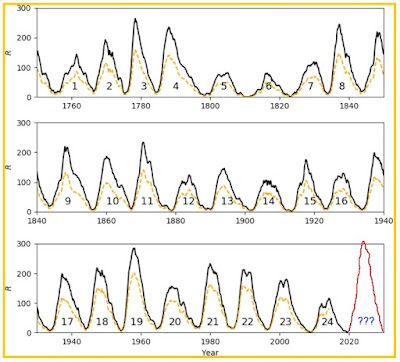 |
| Will Cycle 25 replace Cycle 19 as #1? Image source with my addition in RED. |
During Cycle 24, maximum usable frequencies (MUF) for F2 propagation often struggled just to reach 28MHz, and except for the peak year, the worldwide propagation conditions that amateurs had come to expect were often absent.
Should these new optimistic predictions come to pass, 6m operators can look forward to some truly, never-before-seen, fall and winter propagation ... for at least three or more winters.
With SSN values reaching the high two-hundreds or beyond, west coast operators can expect to see the 6m band often open before sunrise, most likely favoring Europe via the polar path or towards Africa via the trans-Atlantic path. Unlike 20m, there will be little to no ‘polar flutter’ and since signals propagating near the F2 MUF suffer very little path loss, they will probably be very strong.
Later in the day, propagation will shift south towards Central and South America before moving to the west. Depending on the time of year, the propagation will favor Asia, with signals from Japan, China and other far-eastern exotica in the early fall through the New Year. As well, the band will often stay open for some time after local sunset. Late winter and spring will see the western path favour signals from down under, and stretch out to the southern far east regions towards the Indian Ocean. These were the propagation patterns noted from here during Cycles 21-23, when SSNs reached 233, 214 and 180 respectively.
With much gratitude to Mark (VA7MM) for converting my old analog tapes to mp3, here is a recording I made on the morning of November 7, 1979, at the height of Cycle 21. It will give you a taste of what could be in store. On that Wednesday morning, the band opened around 0800 and continued through to sunset, closing with a three-hour opening to the Pacific and Japan. Like many other 6m operators, I had taken the day off work with a case of the 'F2 flu' that was very prevalent that winter! The recording begins with a short exchange between VE1ASJ and VE1AVX, while trying to work their first KL7 ...
The graph of Cycle 21 shows when the recording was made. Although not known at the time, it was very close to the peak of the cycle.
 |
| courtesy: http://www.solen.info/solar/ |
 |
| courtesy: http://www.solen.info/solar/ |
A record-busting Cycle 25 will be like these previous cycles only on steroids! With such a cycle, 10m will follow a similar pattern but will likely be open 24/7 as I recall listening to VKs and ZLs on 10m AM well after midnight during the downward climb of Cycle 19 ... and this was on a very '10m-deaf' Hallicrafters S-38 and a short wire out the attic window!
For those wanting to read the fascinating paper (Overlapping Magnetic Activity Cycles and the Sunspot Number: Forecasting Sunspot Cycle 25 Amplitude), you can find a pdf here. As well, you can read the ARRL’s own announcement of this exciting possibility here.
One certainty is, that if FT8 is still around by then, it and your soundcard will fold up quickly once the band opens with wall-to-wall S9++ signals. It may be useful during the first early minutes or during marginal openings, but knowing the signal levels that 6m F2 can produce, it will be like trying to use FT8 with dozens of new neighbors operating on your own block ... and you can easily guess how well that might work! As we’ve come to understand, FT8 is a wonderful weak-signal mode, but throw just one bone-crushing signal into the waterfall and it’s game-over ... on F2, there will be dozens of these!
Such stellar conditions on 6m are ideally suited to CW or SSB and I think there will be a fast exodus from FT8 back to the traditional modes very early ... those that aren’t prepared for this, relying only on FT8, will most likely be in for a rude awakening. If you’re a 6m “no-coder”, now’s the time to hunker-down and learn CW ... by the time Cycle 25 becomes productive, you won’t be left out of the many CW DX opportunities that will surely be available on this much quicker QSO mode.
We will no doubt be reading more about this as Cycle 25 begins to grow. As in almost all stronger than normal cycles, growth from the start to the peak is much shorter than normal so I’ll be watching for a fast rise in sunspot numbers once we are really underway.
Hindcast modelling (backtesting) of the data derived from previous cycles going back to the 1700s using the paper’s prediction methodology, shows an accurate alignment with what actually occurred. The red dots in the graph above indicate the model’s predicted peak superimposed on the actual peak. In some cases, the peaks were even higher than the modelling suggested.
The predictions identify the so-called “termination” events, landmarks marking the start and end of sunspot and magnetic activity cycles, extracting a relationship between the temporal spacing of terminators and the magnitude of sunspot cycles. The success of these predictions will depend upon an upcoming terminator event before the end of 2020. Should it occur on time, the predictions will be given a much greater chance of coming to fruition ... "with a terminator event in 2020, we deduce that sunspot cycle 25 will have a magnitude that rivals the top few since records began. This outcome would be in stark contrast to the community consensus estimate of sunspot cycle 25 magnitude."
More interesting discussions of the paper can be found here and here.
This week's high-latitude Cycle 25 sunspots are a great sign. When the terminator event occurs, solar activity will ramp-up very quickly, within one 27 day solar rotation. Let's hope we're getting close.
As noted in the paper, "Very early indications of the spot pattern are appearing at higher than average latitudes. Historically, high latitude spot emergence has been associated with the development of large amplitude sunspot cycles — only time will tell."
Hopefully we’ll all need to hold on to our hats ... it just might just be the ride of our lives!
(1) Scott W. McIntosh (1), Sandra C. Chapman (2), Robert J. Leamon (3,4), Ricky Egeland (1), and Nicholas W. Watkins (2,5,6)
1 National Center for Atmospheric Research, P.O. Box 3000, Boulder, CO 80307, USA.
2 Centre for Fusion, Space and Astrophysics, University of Warwick, Coventry CV4 7AL, UK
3 University of Maryland, Department of Astronomy, College Park, MD 20742, USA.
4 NASA Goddard Space Flight Center, Code 672, Greenbelt, MD 20771, USA.
5 Centre for the Analysis of Time Series, London School of Economics and Political Science, London WC2A 2AZ, UK
6 School of Engineering and Innovation, STEM Faculty, The Open University, Milton Keynes, UK
 FT8 And The Magic Band
FT8 And The Magic Band

Today’s blog is directed to those that may be new to 6m or new to using FT8 on 6m. Some of the things discussed will make your experience on the magic band better for you and better for your neigbours.
Unlike using FT8 on the HF bands, 6m presents some different challenges, especially if you operate in a region where there may be a lot of other locals also using the band at the same time.
Although the weak-signal capability of FT8 has made it possible for many smaller stations or those with makeshift antennas to take advantage of the unique propagation 6m has to offer, it also can create problems for other users of the band when used inappropriately. In regions of dense population, even small stations can create very high local signal levels, often making it impossible for their neighbours to hear weak signals. This is not deliberately-caused QRM but arises when some operators operate 'against the flow’ and transmit on the opposite ‘sequence’ to everyone else in their local area.
On HF, one can transmit or listen on whatever time sequence they wish. Chosing ‘TX 1st’ or ‘TX 2nd’ is usually determined by who you hear calling CQ or who you wish to work. On 6m however, in a densely-populated region of local operators, chosing to transmit whenever you want to is a luxury that can create big problems for your neighbour who may be trying to hear that weak DX signal while you are transmitting!
These problem will not occur if everybody in the region uses and follows the same transmit-receive periods, so that everyone is listening or everyone is transmitting at the same time ... one or the other. Unfortunately, this ‘ideal’ system falls apart easily when one or more of your neighbours is not using the same sequence as everyone else.
For the past few years, a protocol that seeks to alleviate this problem has become popular and well accepted by those familiar with it. Those new to 6m may not know about it or understand the reasoning behind it.
Above all, I would urge new users of the band, or to the FT8 mode, to first listen carefully for a few minutes, before beginning operation, to determine what the majority of stations in their local region are using for sequencing. If they are using ‘TX 1st’, then your choice of ‘TX 2nd’ will likely cause hearing difficulty for many others, as well as for yourself.
Although there are no strict rules, there is a very successful and well-practiced protocol, and that is that the ‘easternmost’ station transmits on ‘1st’ while the ‘western end’ goes 2nd’. This is why you will hear most eastern stations in the morning hours transmitting ‘2nd’, as they are usually calling or looking for Europeans to their east, who are transmitting ‘1st’. By the same token, you will also hear western stations transmitting on '2nd', who are also looking for Europe to their east, transmitting on ‘1st’.
This sequencing protocol usually reverses later in the day when signals from Asia become a possibility, and all North Americans then become the ‘easternmost’ stations and will transmit on the ‘1st’ sequence ... unlike in the morning. I can easily see how newcomers to the band could become confused, when they hear both sequences being used! The best thing, once again, is to listen carefully first and then ‘go with the flow’.
You can read about the UK's Six Metre Group's initiatives regarding these protocols HERE.
OK... so you’re not interested in EU or Asia? Then it shouldn’t matter to you which sequence that you use and best operating practice would again be to ‘go with the flow’ in consideration of other users.
A few days ago I saw a prime example of exactly what not to do, in too many respects. I made a posting on the ON4KST 6m chat page that VE1SKY in NS (Nova Scotia) was being decoded here, mainly to alert others in my region that European signals might be coming next, as hearing the VE1s in BC is often an indicator that the European path is building.
In less than a minute, an S9+ local began calling ‘CQ NS’ on the exact opposite sequence of all others ... effectively blocking the waterfall and any possible hope of hearing weak EU signals. I’m sorry, but this is just terrible operating procedure, with almost zero chance of success, while showing no consideration for nearby users.
Just like working DX on CW or on phone, the best way, as it always has been, is to ‘listen, listen and then listen some more’. You will work FAR more DX by listening and calling at the right time, than you will by calling CQ.
I also see some local stations everyday, calling endless CQs, often for over 60 minutes straight and often with many replies that go unnoticed. With FT8, one can check ‘work 1st’, go away, and return later to see who they might have ‘worked’. Perhaps this is what these operators are doing, but they should understand that they are also creating non-stop QRM for other users ... those that choose to listen carefully to the band rather than to endlessly CQ. Once again, this is just poor practice.
You may argue that if nobody called CQ, then there would be no contacts made. There is nothing wrong with a few CQs but CQing for an hour? And don’t worry, there will always be other stations CQing endlessly for you to hear, even if it’s not a great way to operate.
With a little pre-planning for sequencing and consideration for your neighbours, everyone can and should be able to enjoy 6m FT8 with very few problems ... and that is my hope for all of us.
After forty-eight summers of CW and phone on 6m and two summers on FT8, these are some of my initial thoughts on how to best operate for maximum success and consideration for other band-users.
The latter is part of the basic framework upon which amateur radio was originally established, when back in 1914, the ARRL described in their 'Code of Conduct' for amateurs ... "The Amateur is Gentlemanly. He never knowingly uses the air for his own amusement in such a way as to lessen the pleasure of others."
Now, let the magic, and the pleasure, continue!
 Magic Band Mid-Season Observations
Magic Band Mid-Season Observations
 |
| courtesy: KC8RP FT8 Info |
We are now half-way through this summer’s Sporadic-E season, normally the magic band’s best time of the year. The only exception to this being the winter months of those solar cycles that are robust enough to raise the F2 MUF up as far as 50MHz ... something that occurred for only two or three days during the peak of Solar Cycle 24.
Unfortunately, it really looks as if the old reliable bread and butter modes on 6m, CW and SSB, are fast going the way of the dodo bird, as very few signals on either of these modes have been heard here this summer. As speculated last year at this time, it seems as though the weak signal (WSJT) FT8 mode now reigns supreme on the band, which has come as a great disappointment to myself and many other diehard CW ops.
At the start of this year’s season I reluctantly decided to pay more attention to this mode and see if it could put any new DXCC entities into my 6m log ... if so, it would be time well-spent.
For the past several years, my main 6m interest has focused on European or South / Central American openings, which are usually unpredictable and short-lived. As usual, most of the season’s openings have been domestic, with signals from the central and south-eastern states being the ones most often heard. Usually, signals during these openings are strong and fairly reliable and lend themselves to easy two-way work on either CW or SSB. For the vast majority of summer time openings, FT8 is not needed, as signals are not weak.
For some reason, the popularity of this weak-signal mode on 6m continues to grow in popularity even though signals are so strong! Where this mode really shines is on the short-lived long haul openings to EU or on similar long paths from the PNW, of which there have been very few this season.
With everyone crowded into a narrow passband of ~ 2kHz, it doesn’t take much to mess things up for your neighbours if you don’t think carefully about how your operating can affect other users of that small sliver of space.
One of the most common examples of poor operating skills that I see is the seemingly endless CQ. This is much easier to do on FT8 than with conventional modes, as the software used can do this automatically for you, every 15 seconds ... while you fiddle with something else in the shack. I’ve seen some nearby stations call CQ continuously for over 60 minutes at a time, with no replies. What this does is make it difficult for other nearby users to actually hear / decode any weak signals on the band that are being covered by the loud CQing station(s) during this entire span of time. Strong local signals can wreak considerable havoc with weak-signal mode software as it's just not designed to happily handle strong signals and do a good job of decoding weak ones at the same time! Please think about this if you are one of those long CQers ... you are not the only one trying to use the band.
Another observation has to do with 'sequencing'. FT8 users must decide if they will transmit on the ‘even’ or on the ‘odd’ 15-second sequence. If you, and all of your neighbours are loud with each other, then it makes sense that everyone is better off operating on the same sequence. This way, all locals are transmitting at the same time which means they are all listening at the same time as well ... nobody causes QRM for one another if everyone uses the same sequence.
This comes off the rails very easily when just one or two strong neighbours choose to transmit during the receive sequence being used by everyone else.
There has been a long-standing precedent for sequencing, established and utilized by meteor-scatter operators for several decades. It calls for stations on the eastern-most end of a path (Europeans for example) to transmit on ‘evens’ ... the ‘0-15’ and ‘30-45’ second segment of each minute. Stations on the western-end of the path (NA) transmit on the ‘odds’ ... ‘15-30’ and ‘45-60’ second portion of each minute. When looking towards JA later in the day, everything reverses for NA stations, as they now become the eastern-end of the path.
Some operators seem to get totally confused by this or don’t check to see what sequence is being used locally before starting to operate ... while some don’t really seem to care.
I’m not complaining about what a given amateur chooses to do but simply describing some of the roadblocks to better use of FT8 and why it is not necessarily very well-suited for 90% of the typical propagation seen on 6m Es.
Many of the newer stations often seem to be using poor or makeshift antenna systems on 6m and are often not able to hear stations responding to their CQs, which may be strong enough locally to disrupt reception for those that are able to hear weaker signals.
I have deliberately made a point of never calling CQ on FT8. From decades of CW DXing I have come to understand that it’s much easier to work DX, on any band, by spending your time listening ... and then calling when the time is right. It’s no different with FT8, yet I see CQs that go on forever. Some will argue that if nobody called CQ, then there would be nobody to hear, which is of course valid ... the reality is, most amateurs cannot resist calling CQ, especially DX stations who enjoy working a pileup. There seems to be no shortage of CQers and those seeking DX should take advantage of that fact.
One loud station was seen yesterday calling another for over 90 minutes-straight. Perhaps he had wandered away from his shack and had forgotten to ‘Halt Tx’ before leaving! FT8 users need to understand how to use their software efficiently.
As for PNW to EU propagation this summer, it has been almost non-existent although I have worked CT1HZE in Portugal and JW7QIA in Svalbard ... by listening ... listening ... and calling briefly, both on FT8. In both cases, signals were brief but strong enough for CW! During the short-lived appearance of the JW7, two NA stations were noted calling ‘CQ JW’ the entire time. Perhaps if they had spent this wasted time more wisely by listening, they would have worked JW.
I’m happy to report that Svalbard was a new DXCC entity for me on 6m, #88, and the first 'new one' in a few years.
It seems that when used sensibly, FT8 is a useful application to have in your DX toolbox ... but for most daily summer Es operation, it’s just not needed. CW or SSB is well up to the task most of the time, even for small stations. Where FT8 shines is on the very brief, often unstable, long haul (EU-NA or JA-NA) paths and then, only if your neighbours don’t do things that will get them into the naughty-corner!
Now, let’s see what the second half of the season has in store for the magic band .... maybe the best is yet to come.
 Back To The Magic
Back To The Magic
The magic band has always had a strong pull on me, ever since being put under its spell in the late 60s. I quickly learned that the surest way to guarantee a band opening was to leave the house for a few hours. Invariably when returning, the other local 6m addicts would gleefully describe everything that you had ‘just missed’. The 6m gods were rarely forgiving and this unfailing behaviour became part of the band's mystique.
This odd love-hate relationship continues to this day but with the FT8 mode being used almost exclusively now on 6m, it’s your computer that now snickers at you for any untimely excursions from the shack ... showing you, in any delightful color scheme that you choose, all of the DX that you 'just missed' once again!
It happened to me again yesterday, while out in the yard stacking next winter's firewood.
It was just a short excursion, as the eastern stations were working Europeans and all of the VE4 beacons were very loud back here on the coast. The possibilities of a link to the European path kept my excursion to only 10 minutes but sure enough, there it was on my WSJT-X list of decodes .... several CQs from CT7ANG in Portugal! My laptop could barely stop giggling. This would have been the first PNW-EU QSO of the summer had I been maintaining vigilance.l!
163315 -14 0.1 738 ~ CQ CT7ANG IM67
I continued to stack firewood and to watch the band more closely, knowing that every once in awhile, for entertainment purposes, the prop gods will toss out a bone or two, just to keep you on the hook.
A later check indicated that CT1HZE’s CQs had been decoded just a few moments earlier ... there was renewed hope!
185100 -2 0.2 2134 ~ CQ NA CT1HZE IM57
Joe’s strong FT8 CQ popped-up again a few minutes later and he came right back to my initial call. Although that was it for the day, the 2019 PNW-EU path had begun!
I’m still somewhat ambivalent about FT8 and its ‘coldness’ when it comes to person-to-person interaction, but since most of the DX action on 6m is now digital, it’s either embrace it or miss out. At the moment, I’m at least prepared to hug it and see how it behaves. If it puts more Europeans and new DXCCs into my magic band log, then that’s a worthwhile investment.
Unlike way too many others, I’m not prepared to let my computer endlessly CQ for hours at a time. In a crowded local environment, with big strong signals being the norm, this method of operating is simply disrespectful to other amateurs as this mostly useless CQing will usually make reception of any weaker signals impossible.
FT8 is a weak-signal mode and the interfaces used do not handle extremely strong local signals very well. I would urge others to think about this poor operating practice and adopt what has always proved to be the best tactic for catching DX ... listen, listen, listen. The same tactic works just as well on FT8 as it does on CW.
Back to stacking firewood but having tossed me a bone yesterday, I’m sure the prop gods will be out to get even for awhile!
This odd love-hate relationship continues to this day but with the FT8 mode being used almost exclusively now on 6m, it’s your computer that now snickers at you for any untimely excursions from the shack ... showing you, in any delightful color scheme that you choose, all of the DX that you 'just missed' once again!
It happened to me again yesterday, while out in the yard stacking next winter's firewood.
It was just a short excursion, as the eastern stations were working Europeans and all of the VE4 beacons were very loud back here on the coast. The possibilities of a link to the European path kept my excursion to only 10 minutes but sure enough, there it was on my WSJT-X list of decodes .... several CQs from CT7ANG in Portugal! My laptop could barely stop giggling. This would have been the first PNW-EU QSO of the summer had I been maintaining vigilance.l!
I continued to stack firewood and to watch the band more closely, knowing that every once in awhile, for entertainment purposes, the prop gods will toss out a bone or two, just to keep you on the hook.
A later check indicated that CT1HZE’s CQs had been decoded just a few moments earlier ... there was renewed hope!
Joe’s strong FT8 CQ popped-up again a few minutes later and he came right back to my initial call. Although that was it for the day, the 2019 PNW-EU path had begun!
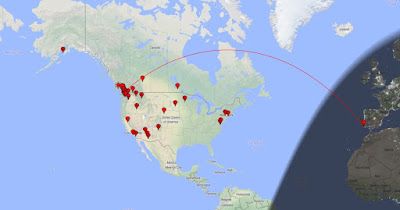 |
| courtesy: PSK Reporter |
I’m still somewhat ambivalent about FT8 and its ‘coldness’ when it comes to person-to-person interaction, but since most of the DX action on 6m is now digital, it’s either embrace it or miss out. At the moment, I’m at least prepared to hug it and see how it behaves. If it puts more Europeans and new DXCCs into my magic band log, then that’s a worthwhile investment.
Unlike way too many others, I’m not prepared to let my computer endlessly CQ for hours at a time. In a crowded local environment, with big strong signals being the norm, this method of operating is simply disrespectful to other amateurs as this mostly useless CQing will usually make reception of any weaker signals impossible.
FT8 is a weak-signal mode and the interfaces used do not handle extremely strong local signals very well. I would urge others to think about this poor operating practice and adopt what has always proved to be the best tactic for catching DX ... listen, listen, listen. The same tactic works just as well on FT8 as it does on CW.
Back to stacking firewood but having tossed me a bone yesterday, I’m sure the prop gods will be out to get even for awhile!
 630m … The New ‘Magic Band’?
630m … The New ‘Magic Band’?

The 'magic band' has always been associated with 50 MHz and its amazing propagation ... usually unpredictable and often without logical explanation. This past summer saw an explosion of digital FT8 activity on 6m which has, for me (and for others I suspect), eliminated almost all of the enjoyment I have found every year on this band.
With so much of the previous CW and phone activity now gone to FT8, the 'feel' of the band is just not what it once was. What I find puzzling is that so many have embraced this weak signal mode yet most of the two-way QSOs seem to be made between stations that can easily hear each other ... often at the very strong levels produced by 6m sporadic-E!
With FT8's inability to chat about antennas, rigs, propagation, locations or simply to exchange names, for me the magic has gone. Being able to hear signals build, fade up and down, or to experience the sudden arrival of bone-crushing signals from the east coast where none had existed moments earlier, is all part of what attracted me to 6m decades ago. I spent only a few hours on the band last summer, working a number of JA stations on FT8. No particular sense of satisfaction was garnered ... working a JA opening on CW is just way more exciting!
For many, the arrival of FT8 to the magic band has opened a whole new world and from seeing so many unfamiliar call signs on 6m this summer, it seems that FT8 has brought a lot of newcomers to the band. Unlike the JAs' worked every summer on CW, almost all of the FT8 JAs' sent their QSL immediately, with almost all excitingly indicating "1st VE" ... so this has to be a good thing! I suspect, that unless the level of conventional-mode activity returns to previous levels on 6m (highly unlikely), my interest in 50MHz will slowly wane or vanish altogether ... but thankfully, there's still magic to be found elsewhere on the ham bands!
As solar Cycle 24 draws down into its final months, the deep lows that were experienced at the end of Cycle 23 are starting to develop once again. For the past few weeks, propagation below the broadcast band has been the best it has been since the previous solar quieting.
Being just below the bottom edge of the broadcast band, 630m (472-479 kHz) has seen some of the benefits of the recent round of stagnant geomagnetic activity.
While some transcontinental QSOs are regularly being made on CW, most contacts are being completed using the weak signal JT9 QSO mode. Contacts can often be completed just as the sun begins to set and staying up into the wee hours to catch east coast DX is not a requirement. Over the past few weeks my 'states worked' total has climbed to 30 and with a couple of holdouts, the QSLs have been steadily arriving.
 |
| My 630m states worked, shown in red. Map courtesy: https://mapchart.net/ |
Last month's arrivals, in spite of the Canada Post delivery disruptions, are shown below.
The recent great propagation on 630m is well-demonstrated by last Saturday night's activity. For the previous two evenings, my JT9 CQ's (as well as QSOs) were being decoded for hours at a time by Rolf, LA2XPA in Norway. He was also hearing Larry, W7IUV, located a few hundred miles to my southwest, on the other side of the Cascade mountains in Washington state. Both of our signals would fade and trade places in Norway but often reaching audible CW levels! The problem was that neither myself or Larry could see any of Rolf's replies to us ... disappointing to us and frustrating for Rolf.
After an hour of trying, I asked Rolf (via the ON4KST LF chat page) what he was using for a receive antenna. It turned out that his secret weapon was a 1000' beverage pointed this way ... no wonder he was hearing so well. Larry, who was using a shorter, easterly pointing BOG (Beverage On Ground) for 630m receive, commented that he also had a 1000' beverage pointed toward Europe but it was optimized for 160m and doubted that it would work on 630. Just to make sure, he plugged it into a second receiver and soon indicated that he 'might' have seen a weak JT9 trace on the waterfall, close to Rolf's frequency.
One minute later Larry's comment was just "wow!" and the following minute he explained what had occurred. It seems that the 'possible weak trace' had suddenly skyrocketed to a -16db signal ... right at the edge of audibility! Larry and Rolf quickly exchanged signal reports and "RRs" as the first Europe-West Coast 630m QSO went into the history books ... 'wow' indeed!
Rolf reported that at his end, Larry's already good signal suddenly shot up to -5db, an easily copied CW level, before fading away for the night. Larry was pretty shocked at how quickly this strong short enhancement had occurred and we all hoped that the oft observed 'spotlight' propagation seen on 630 would move further west to VE7 ... but for now, it was not to be.
Earlier in the evening I had commented to Larry about some previous quirky 630m propagation and had suggested to him that it was probably just due to "the magic of radio" ... to which he politely dismissed with "sorry no magic, just hard work and dumb luck". Looks like he was right on both accounts, but after Saturday's excitement I think he may now believe in a little magic as well!
 6m … Where’d The Magic Go?
6m … Where’d The Magic Go?

This summer's 6m sporadic-E (Es) DX season is now well past the half-way mark and things have been different ... a lot different. For me, the past 40 plus summers of activity on the magic band have always been interesting, if not down right exciting ... particularly when the band opens to Europe from the west coast.
These usually very short-lived paths have been my main interest for the past several years and the bread and butter mode is normally a fast CW exchange, usually taking less than 20 seconds before signals would vanish, as the always quirky west coast path to Europe would jump to another region. But this has all changed dramatically.
As well, it seems that this summer, the normal SSB and CW modes have been largely abandoned by a huge percentage of the crowd, in favor of FT8, the weak-signal digital QSO mode originally developed with 6m in mind.
I have seen many strong openings involving loud FT8 signals from various parts of North America but when tuning down to the CW/SSB section of the band, found nothing but ghostly silence! Gone are the familiar voices of friends met every summer for decades or the recognition of an old friend's fist on CW ... for me personally, most of the magic was missing this summer. I wonder if this is all part of the natural evolution of amateur radio or does the FT8 revolution signal the long term fate for many of the older conventional modes?
I have seen many strong openings involving loud FT8 signals from various parts of North America but when tuning down to the CW/SSB section of the band, found nothing but ghostly silence! Gone are the familiar voices of friends met every summer for decades or the recognition of an old friend's fist on CW ... for me personally, most of the magic was missing this summer. I wonder if this is all part of the natural evolution of amateur radio or does the FT8 revolution signal the long term fate for many of the older conventional modes?
There appears to be a lot of new activity brought to the band by this mode, and many are experiencing the magic band for the first time. I have heard at least two dozen or more VE7 calls on 6m this summer that I have never heard before and this is a very positive thing! From what I can tell, many of the new stations on the band may have makeshift or simple antennas, such as verticals or dipoles and not something larger and are just getting their feet wet on the band.
FT8 allows for two-way weak signal work (a few db below audible limits) that the traditional modes would not support, and simpler stations, without big antennas, can now join the fun. I often see many of the newer stations calling CQ but not hearing their numerous replies, which leads me to think that their receive-capability does not yet match their transmit-erp ... perhaps they just have a lot of local noise or are running more power than they can properly deal with, something they should think about. Often the new FT8 stations will continually CQ, sometimes as long as 90 minutes at a time and create a lot of unnecessary and waterfall obliterating QRM on the band for those that do have good antennas and can hear what they do not. I'll do another blog later regarding FT8 on 6m, and what I have observed this summer.
Here on the west coast, up until last summer, it was fairly normal to have a few short-lived Es openings to Europe. You had to always be on your toes to catch these as they would vanish as suddenly as they appeared. The best of these was back in June of 2012 when a mid-morning opening produced 31 CW contacts in DL, F, SP, CT, ON, GM, IT, LZ, EI, G, S5, I and EA8. Nine new countries were put in the log that morning as the Es clouds danced around, shifting the propagation from one country to another, every other minute. This was the magic band at its best!
Like last summer, this year has produced almost zero trans-Atlantic propagation from VE7 land, other than contacts with CT1 and EA8, both on FT8. Perhaps some external factors are changing the band enough that this path will vanish permanently ... only time will tell.
Dave, K7RWT, recently pondered if it may have something to do with the north magnetic pole migration over the past several years as it moves to the north-northwest at ~60km per year.
 |
| Track the pole's movement here. |
Most mornings, the Europeans are into the east coast early, often times making into the central states and occasionally into the southwestern states:
 |
| July 18th courtesy: http://www.on4kst.org/chat/index.php |
Later in the afternoon, it has not been unusual to see widespread JA to North America action, usually going straight overhead and as far back as the New England states and down to Florida!
 |
| July 20th courtesy: http://www.on4kst.org/chat/index.php |
There have been several openings between here and JA, sometimes lasting for several hours. So far I've worked about 200 JAs this summer and judging by the flood of daily QSLs arriving from Japan, many are newcomers to the band (the FT8 effect?), often indicating that I was their 'first VE' contact on 6m.
One particularly interesting 'opening' from here happened in the wee hours, starting just after 2300 local time and ending just after 0200, as all west coast operators were sawing logs. A morning check of my FT8 decodes indicated many strong signals from Japan, Taiwan, China, Korea and Hong Kong. I'm sorry that I missed out as the VR2 would have been a new country for me.
The non-JA stations heard were:
BM6GJL PL02
HL1BRU PM37
HL2IFR PM37
BG4QNE PM01
VR2VAZ OL72
BV2FB PL05
BV6CC PL03
BV1EK PL05
BM3GFU PL04
Thanks to Paul, K7CW, for doggedly sorting through my all-night decode file which may be viewed in full here.
With just a couple of weeks left in the normal Es season, it will be interesting to see if FT8's extra few db will extend it longer than usual!
 |
| Overnight decodes July 8-9 |
BM6GJL PL02
HL1BRU PM37
HL2IFR PM37
BG4QNE PM01
VR2VAZ OL72
BV2FB PL05
BV6CC PL03
BV1EK PL05
BM3GFU PL04
Thanks to Paul, K7CW, for doggedly sorting through my all-night decode file which may be viewed in full here.
With just a couple of weeks left in the normal Es season, it will be interesting to see if FT8's extra few db will extend it longer than usual!



